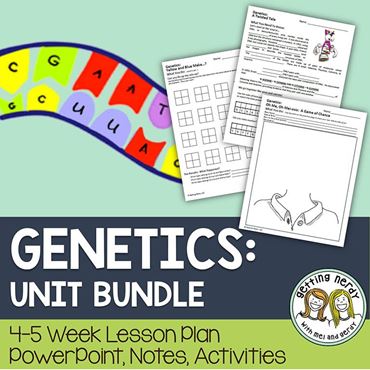
GN1016
Price: $63.95
You’re ready to teach with this comprehensive bundle on genetics. Engage your students with animated PowerPoints and 4–5 weeks of aligned lessons covering the following topics:
Unit bundle includes:
MS-LS3-1. Develop and use a model to describe why structural changes to genes (mutations) located on chromosomes may affect proteins and may result in harmful, beneficial, or neutral effects to the structure and function of the organism.
MS-LS3-2. Develop and use a model to describe why asexual reproduction results in offspring with identical genetic information and sexual reproduction results in offspring with genetic variation.
MS-LS3-1. Develop and use a model to describe why structural changes to genes (mutations) located on chromosomes may affect proteins and may result in harmful, beneficial, or neutral effects to the structure and function of the organism.
MS-LS3-2. Develop and use a model to describe why asexual reproduction results in offspring with identical genetic information and sexual reproduction results in offspring with genetic variation.
MS-LS4-5. Gather and synthesize information about the technologies that have changed the way humans influence the inheritance of desired traits in organisms.